The Gregory Deva 60 is a women’s internal-frame backpack that’s specially designed to carry heavy loads up to 50 pounds in comfort. It’s ideal for long backpacking trips, multi-sport adventures, and international travel when you want a backpack that’s loaded with features, but can be easily modified and adapted for different uses. If you prefer the organizational style of a top loader and want a pack specifically designed for women, the Deva has a full feature set and a frame and hip belt system that’s a marvel to use.
Gregory Deva 60 Women's Backpack
Comfort
Weight
Suspension
Features
Adjustability
Sizing
Durability
Specs at a Glance
- Gender: Women’s
- Weight: 4 lbs 10 oz (actual, size small tested)
- Volume: 6oL (also available in 75L, 85, and 95L sizes)
- Frame: Aluminum hoop with sewn-in TPU stiffener and cross-piece stabilizer
- Number of exterior pockets: 9
- Hydration compatible: Yes
- Bear canister compatibility: Yes
- Sleeping bag compartment: Yes
- Raincover included: Yes
- Hipbelt pockets: Yes
- Removable daypack: Yes
- Max Recommended Load: 50 lbs.
Backpack Storage and Organization
The Deva 60 can hold an impressive amount of gear, far more than you’d expect in a 60L backpack. In addition to the main compartment, the Deva also has 10 external pockets for storing gear: 3 pockets in the top lid, 3 pockets on the front of the pack, a side water bottle sleeve, a side mesh pocket, and 2 hip belt pockets. The pockets make it easy to organize and store the contents by frequency of access or purpose, although there are so many pockets that it might take a few uses to dial in a system where you can remember where everything is stored.
Main storage
The Deva is a top-loading backpack with a floating lid, but there are several ways you can access gear stored in the pack, including full front panel access. This a common feature on higher volume packs, so you can access gear without having to unpack and then repack it all.

The front of the pack can be opened with a large U-shaped zipper, so you can directly access clothing deep inside. There’s also sleeping bag pocket at the base of the pack, with an optional fabric “shelf” to create a separate sleeping bag compartment. You should experiment, but I find I can pack more gear into the pack if I drop this shelf and pack the main compartment as a single cavity.
Hydration pocket/Day pack
The Deva comes with a hydration pocket in the main compartment that can serve double duty as a frameless day pack. You can opt to remove it completely, but it is handy when traveling, so you don’t have to lug a heavy pack around all day. You can still hang a hydration reservoir in the backpack without it, which has two hydration ports over the shoulder pads to run a hose.
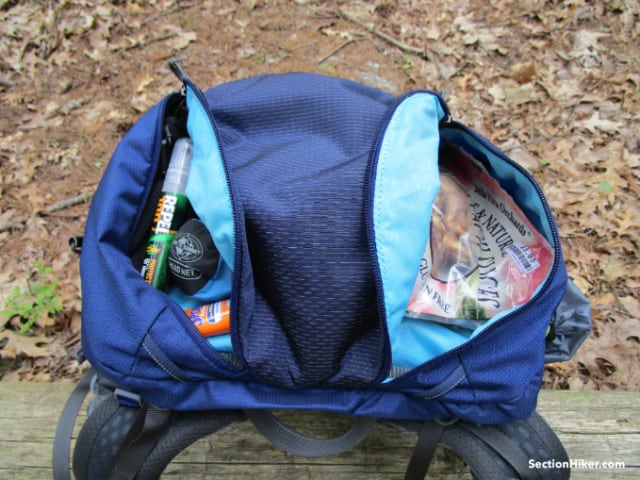
Top lid
The lid has two “double-barrel” pockets that split it down the middle, with zippers that run from front to back, instead of side to side like most backpack lids. This forms two deep compartments that are handy for separating different gear types, like gloves and hats, from say, navigation equipment like a GPS, Satellite Messenger, map, and compass. It’s a great organizational feature not found on other packs. There’s a third pocket on the underside of the lid which also makes a handy place to store the included rain cover or more personal item like toiletries.
Front Panel Pockets
The front panel has three pockets built into it, a stretch pocket, and two more double-barrel pockets underneath it. The mesh pocket is good for storing wet gear like a water purifier, rain layers, or snacks for fast access. The mesh is durable, with small holes to prevent snagging but still allow for airflow. The double-barrel pockets under the mesh pocket are long and tall, with enough capacity to hold a pair of camp shoes, one on each side, jackets, or other soft objects.

Side bottle pockets
The Deva is unusual because it doesn’t have symmetric side pockets. While there is a side mesh pocket on the left side of the pack, it’s not large enough to store a water bottle and is best used to capture the bottom of long skinny objects, like tent poles, glacier wands, or a collapsible fishing rod.

You can store a water bottle on the right side of the pack in a water bottle holster, sized for a 1 liter Nalgene bottle. If you don’t want to use the holster, it folds away under a protective flap on the side of the pack. If you prefer carrying more water than that 1 liter, you have to use a hydration reservoir w/hose or pack extra bottles elsewhere inside the backpack.
Hip belt pockets
The hip belt comes with two pockets, one a water-resistant hip belt pocket with a waterproof zipper and the other with a mesh front, that’s good for storing wet items or snacks. The mesh pocket will hold a small snack or a small to medium-sized cell phone. There is a waterproof pocket also, but the fabric is very stiff and I had a hard time getting my small camera in and out of it. Both of the hip belt pockets are sewn to the belt at the top and have hook and loop closure on the bottom. This allows you to easily run any extra hipbelt strapping under the pockets to get it out of the way, which is a nice feature.
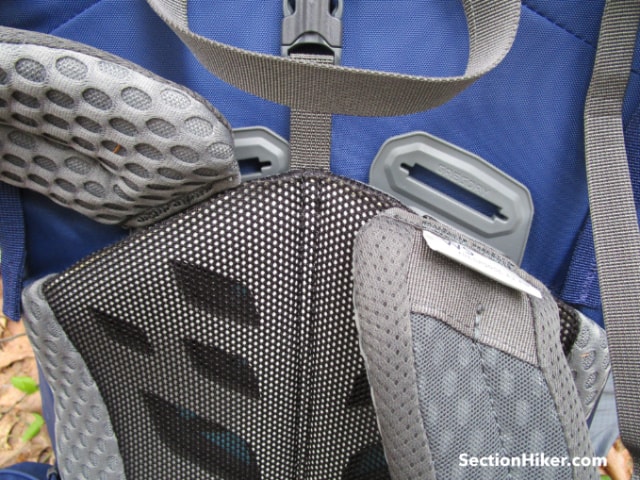
Backpack Frame and Suspension
If the storage and organizational features of the Gregory Deva haven’t impressed you, the backpack’s frame and suspension system surely will.
The Deva frame is a wishbone-shaped hoop that channels the load to the center of the hip belt. It also has a horizontal stay for stiffness and is bolted to a TPU sheet sewn into the back of the pack. The combination is flexible, lightweight, and quite strong so it won’t barrel into your back if you overstuff the pack with gear.

The shoulder pads and hip belt are available in different sizes and interchangeable, so you can dial in a near-custom fit. The shoulder pads are female-specific and S-shaped so they can wrap around your breasts and don’t mash them flat like the J-shaped straps found on most men’s and “unisex” backpacks. The shoulder pads slot into one of two positions on the pack, providing an additional 2 cm of vertical adjustment within each torso size to help dial in the torso length.
The shoulder straps and the hipbelt both are designed to dynamically pivot as your torso angle changes (Gregory calls it “automatic angle adjustment”), so the pack moves with you for scrambling or climbing. The pivot mechanism also provides an important fit benefit, even when you’re not moving, since the shoulder straps and hipbelt will adapt to your body shape. It’s an innovative way to address individual fit and gender differences across a wide range of body shapes.

The hipbelt padding is very firm and can contribute to rubbing if you have clothing seams in the wrong place under the belt. I would recommend some trial and error in determining what pants to wear with the pack. I had one pair that led to a painful rubbing on my hip bones. It’s worth noting that I have at least one other pack that does not work with these pants, so it wasn’t a complete surprise that they were a problem. A different pair of pants worked fine though.
The Deva’s hipbelt has a pronounced lumbar pad which some people may find uncomfortable, especially since the wishbone frame concentrates the load at this point. But the lumbar pad has a padded insert that can be removed to reduce its intrusiveness and relieve any lumbar discomfort. A textured silicon coating covering the lumbar pad also prevents slippage down your back.
While the back panel of the Deva isn’t a suspended mesh frame like the ones found on Osprey’s Anti-Gravity packs, it’s still quite comfortable and provides good ventilation. Cushy, wicking padding on the inside of the shoulder straps and hip belt also helps to channel moisture away from your clothing and body, while still maintaining moderate stiffness.
What’s the Deva feel like when it’s full of gear? Surprisingly lightweight. The hip belt and frame do such a great job of transferring the load to your hips that heavy loads really feel lighter. If you’re used to carrying a lightweight backpack with a less impressive frame, it’s a real eye-opener.
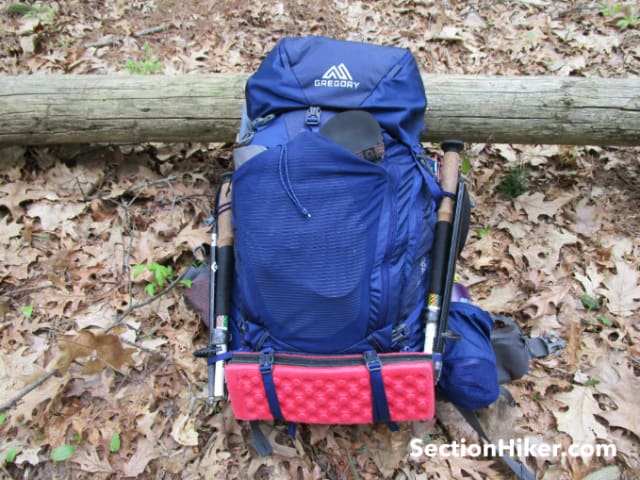
Backpack Compression and External Attachment System
The Deva comes with two tiers of side compression straps that close with side-release buckles, making it easier to attach bulky gear like snowshoes to the outside of the backpack. The compression straps are extra-long and can be connected over the front pocket, making it easy to carry a snowboard or tent body behind you. It’s a feature you often find on mountaineering backpacks.
Sleeping Pad Straps
The Deva also comes with sleeping pad straps. These are attached to the base of the pack and can be removed if they’re not needed. They can also be used to make a hip belt for the removable daypack.
Ice/Axe and Trekking Pole Holders
Webbing loops at the front corners make it easy to carry ice axes or trekking poles, with a pair of shaft holders, a detail which is left off many backpacks.
Extra Gear Loops
There are 12 additional gear loops sewn into the seams and distributed around key areas of the Deva for lashing even more gear to the outside of the pack. In addition to the 4 gear loops for sleeping pad straps at the base of the pack, there are 4 gear loops on the top lid which can be used for attaching a solar recharging panel, and 4 gear loops around the perimeter for attaching gear to the front of the pack.
Comparable Women’s Backpacks
| Make / Model | Weight | Price |
|---|---|---|
| Deuter Aircontact Lite 60+10 SL | 4 lbs 3 oz | $220 |
| Granite Gear Blaze 60 | 3 lbs | $270 |
| Gregory Deva 60 | 4 lbs 10 oz | $300 |
| Osprey Ariel AG 65 | 4 lb 14.4 oz | $310 |
| Osprey Ariel Pro 65 | 3 lbs 12 oz | $375 |
| Osprey Aura AG 65 | 4 lbs 4 oz | $270 |
| REI Traverse 65 | 4 lbs 11 oz | $249 |
Recommendation
The Gregory Deva 60 is a highly configurable women’s backpack that’s loaded with pockets that make it easy to organize your gear for weekend backpacking trips, expedition-style adventures, and international travel. It has an innovative pivoting frame and hip belt suspension system that makes carrying heavier loads surprisingly comfortable and is capable of carrying quite heavy loads in comfort.
While the Deva 60 is exceptionally comfortable, the pack is definitely on the chunky side in terms of gear weight at 4 lbs 10 oz. While you can lower that by a few ounces by removing some of the optional components, the Deva 60 is still comparatively hefty compared to the Osprey Aura AG 65 (4 lbs 3 oz) and the Granite Gear Blaze 60 (3 lbs 0 oz).
But weight isn’t everything and the advantage that the Deva has over these other packs boils down to the fit, especially the fit of the contoured hip belt and the shoulder straps, which are available in multiple sizes (look for the Gregory A3 QuickAwap Hip Belt and the A3 QuickSwap Harness which are available in 15 different sizing combinations. These coupled with the dynamically pivoting angles of the hip belt are much more sophisticated and personalized than adjustable length hip belts that you can lengthen or shorten in a single plane (like on the Aura AG 65 or Blaze 60).
The Gregory Deva 60’s dynamic suspension is quite pleasant to use, one that makes heavy loads feel much lighter and more comfortable than you’d expect from a heavier backpack.
Note: The newest version of the Deva 60 has mesh front pockets. Old models have a solid front pocket. That is the only difference between the two packs and is a good way to save money if you don’t mind the difference.
About the Author
Compare 3 Prices
-
 REI
REI$299.95$199.73View -

 Amazon US$199.95View
Amazon US$199.95ViewAmazon.com Price: $199.95 (as of 04/24/2024 18:58 GMT-0400) Details
Product prices and availability are accurate as of the date/time indicated and are subject to change. Any price and availability information displayed on Amazon.com at the time of purchase will apply to the purchase of this product.
-
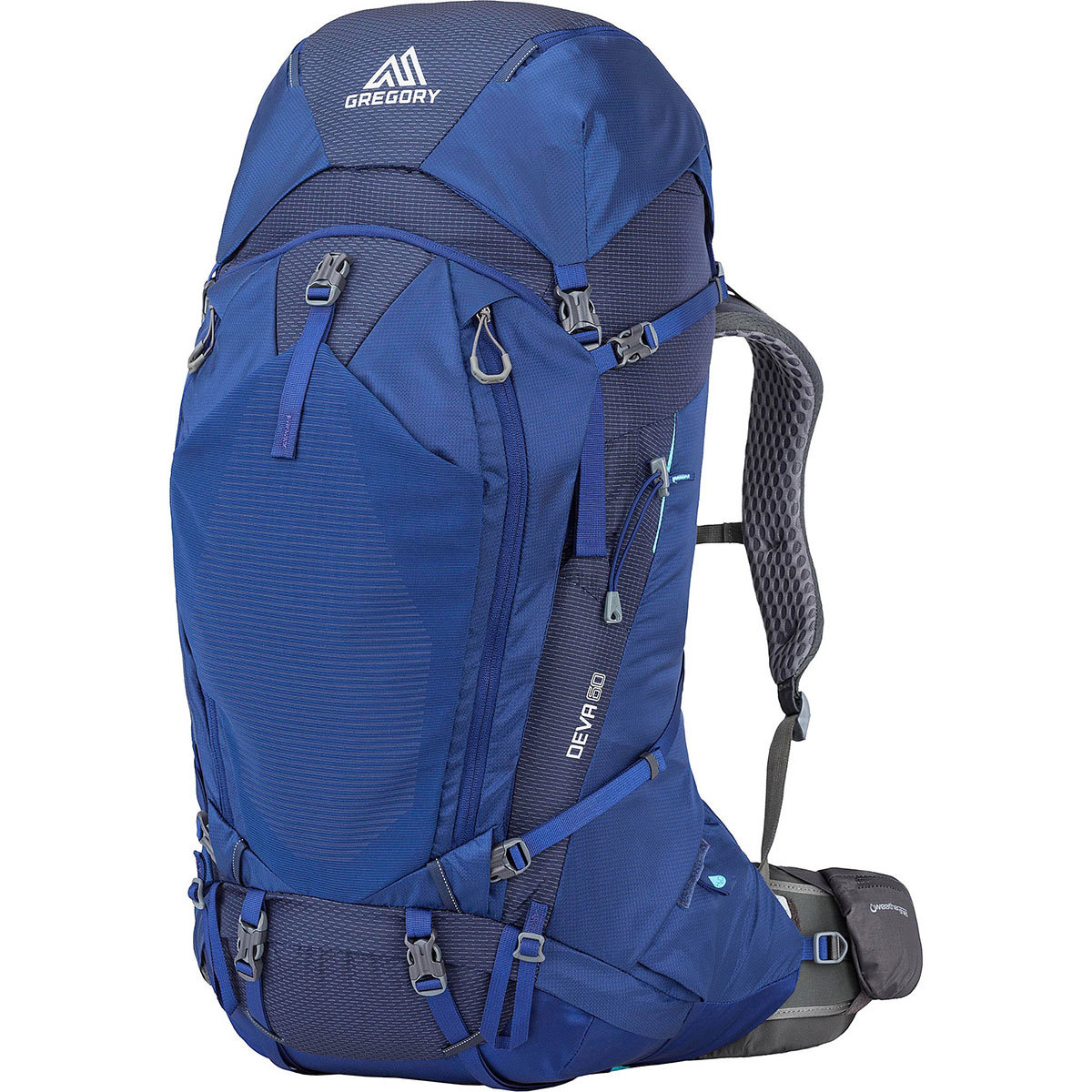
 Eastern Mountain Sports$299.95View
Eastern Mountain Sports$299.95View
Disclosure: Gregory provided SectionHiker.com with a backpack for this review.
SectionHiker is reader-supported. We only make money if you purchase a product through our affiliate links. Help us continue to test and write unsponsored and independent gear reviews, beginner FAQs, and free hiking guides. SectionHiker.com Backpacking Gear Reviews and FAQs
SectionHiker.com Backpacking Gear Reviews and FAQs 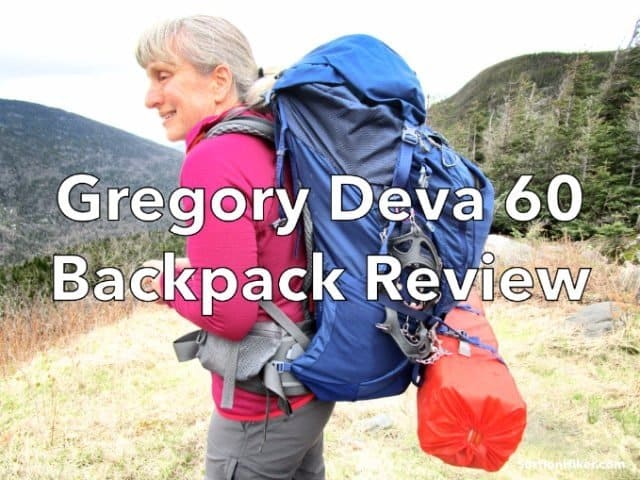

FWIW, my wife liked an older model of the Deva well enough. Then she tried loading a full bear can in it and had the frame flex enough that the load carrying went from good to poor. For almost 5 lbs, she expected it to hold up better to the weight/bulk of the bear can. If she was using an ursack, she probably would have been content to keep it.
In case anyone is interested, I checked the tested pack and it will hold an 11.5 liter Bear Vault (which I have) inside the main compartment vertically. It takes up almost all the depth and most of the width, but it does fit.
Had a Gregory Wind River internal framed backpack two decades ago and sold it after 5 years on constant use. Before selling it I sent it to Gregory to repair some metal ladder buckles. They returned it with upgraded nylon buckles. At no cost to me. Great pack. Great company.
So naturally when searching for a relatively light winter pack of at least 65 liters I physically looked at the Gregory Zulu and liked it a lot – EXCEPT it had a large zip-open front panel that was, to me, a potential point of failure. So I passed on it and bought a Deuter Air Contact 65+10 which I like a lot.
(What winter pack did I use in the past? A boat anchor Dana Terraplane at 7.5 lbs.)
Eric B.
I have an older version of the Deva 60. It doesn’t have that front panel opening but has plenty of pockets. It is very comfortable and one of the few packs made to fit a really petite hiker without compromising packing space.
The actual weight of the latest Deva is 4.61 lbs including the sidekick day pack & Deva rain cover.
The Medium comes in at 4.83 with Sidekick and rain cover.
By leaving those items at home – including the sleeping bag compartment separator.
It is possible to shave of an additional 2+ ounce from the overall weight.
My wife has the Deva in a small & I have been using the Baltoro 65 in a small with medium straps for the past 2 years which weighs in at 4.64 lbs
Several reviews that are currently out there on Deva and Baltoro 65 are completely inaccurate when it comes to the actual weight.
Usually reported as much heavier .
I have personally weighed both of these packs with 2 different very accurate scales and they are the exact weight as I mentioned.
Considering how comfortable the Suspension system is on these 2 packs is , and how well they carry.
One would be hard pressed to find another pack of this quality in a traditional backpack when it comes to comfort to weight ratio.
I have several Backpacks of different volumes for specific purposes.
One of which is White and is Hyperlite .
If I had to carry one or the other all day for days on end with 25lbs – 30lbs
Hands down the Baltoro would be my first choice over the White pack .
Simply because it just plain carries a load far better than the White pack.
Sure I may be carrying nearly 3lbs more with the Gregory compared to the White pack ,but at the end of the day I am a lot less tired and sore.
The Baltoro and Deva were designed to distribute a load far more evenly than the White pack .
With that said, the result is less stain and fatigue to one specific area of the body
Ultralight does not always equate to ultra comfortable.